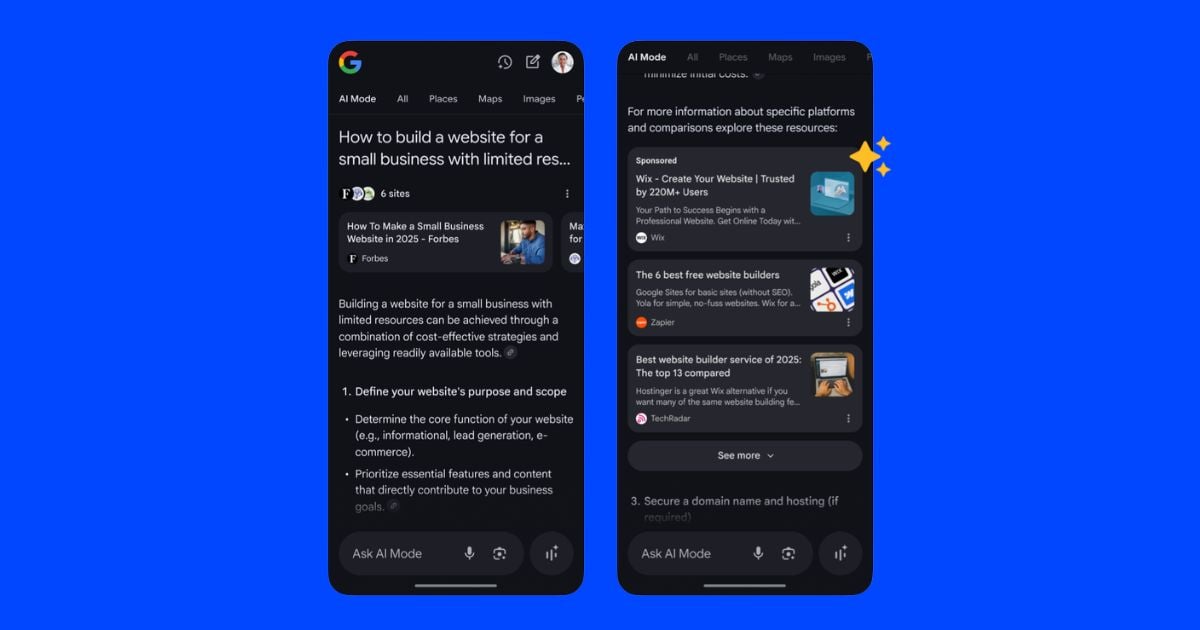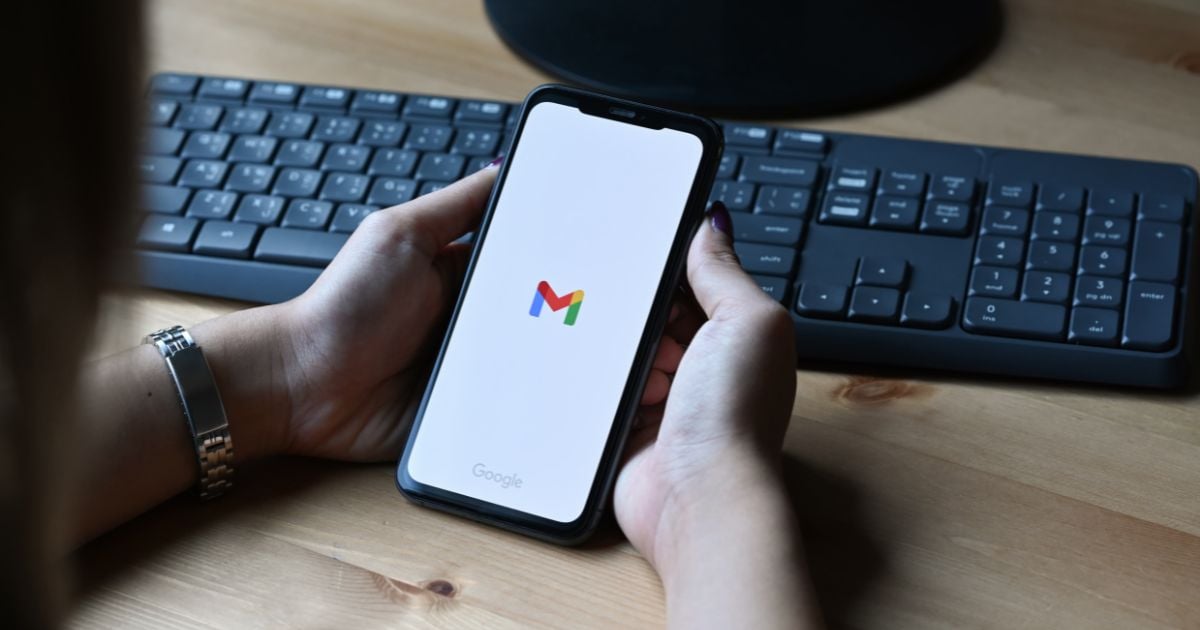Using paid media campaigns to drive leads for your business can be a great way to attract new customers and grow your company. But which platform should you use to do it?
Google and LinkedIn both offer many solutions, but they differ in how they allow you to target the type of people you’ll be reaching.
In this article, I’ll walk through the key offerings for each channel and discuss best use cases and potential drawbacks for each platform so you can decide which is best for you.
Contents
- What are Google Ads?
- What are LinkedIn ads?
- Key differences between Google Ads vs. LinkedIn ads
- Pros and cons of Google Ads vs. LinkedIn ads
- Should you use both Google Ads and LinkedIn ads?
What are Google Ads?
Google Ads allows you to run ads on the largest search engine in the world as well as other Google properties like the Google Display Network, Maps, Gmail, and the second largest search engine: YouTube, which has 122 million daily active users. With that type of reach, it’s hard to ignore Google as a potential lead generation platform.

An example of Google Ads on the search engine results page.
❓ Could your Google Ads account use a boost from LinkedIn Ads? Find out with our free, instant Google Ads Grader!
What are LinkedIn ads?
Unlike Google Ads, LinkedIn ads have a little narrower reach and specialize in helping reach users based on their work and job information on the LinkedIn platform. While its 134.5 million daily active users might not be actively searching for a solution, that doesn’t mean this platform can’t be a gold mine for leads.
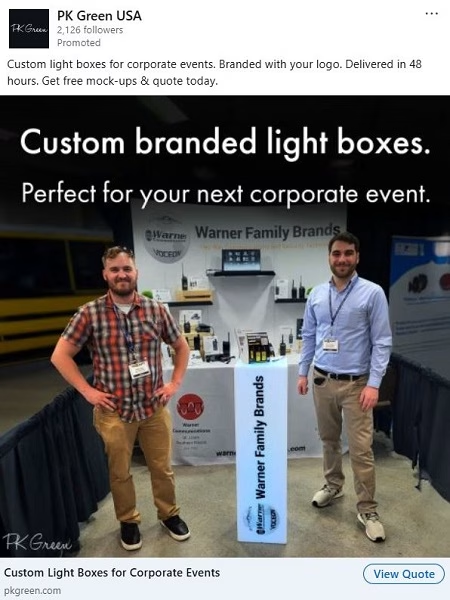
An example LinkedIn ad.
Google Ads vs. LinkedIn Ads: Key differences
Before we dive into when to use each platform to generate leads, let’s discuss some key differences between the two.
Targeting options
Google and LinkedIn allow you to target users in a few different ways.
Google Ads targeting
Google has quite a few different targeting options available, but your options depend first on which networks you want to use.
For search campaigns, you’ll use keywords (or some semblance of them, even with Dynamic Search Ads) to target people as they use the search function on Google to find a solution to their problem or answer a question. Since these users are highly engaged, they are likely to have fairly high intent to take the next step in the buyer’s journey.
Those keywords can tie back directly to the product or service you’re offering to help you generate leads. For example:
- Roofing company near me
- Business accounting software
- When is the best time to buy a new car
Search allows you to get in front of a user in their time of need and try to make an impression. This is a very bottom-of-funnel type of Google Ads targeting since the user is actively looking for some solution that relates to your offerings and is a great time to generate leads from a motivated buyer.
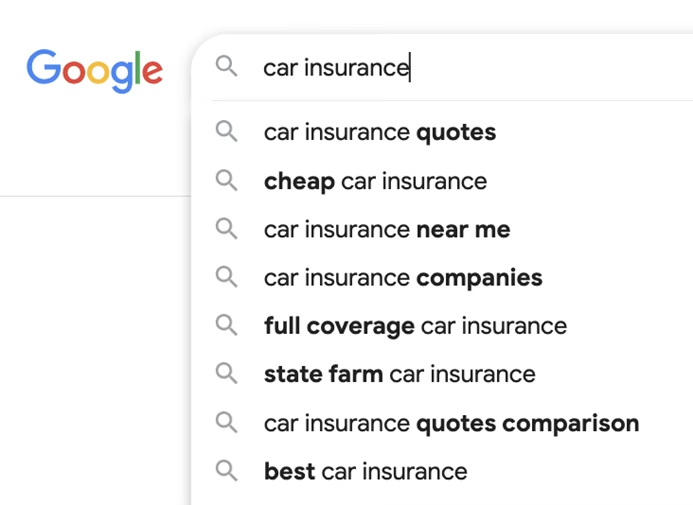
On the Display Network, YouTube, and other platforms, we take a step back from the higher intent action of searching, but there are still all sorts of targeting options available. There are two main categories, with some targeting options based on the content on the page the person is looking at (placements, topics, or keywords) or the user behind the screen (in-market audience, affinity audiences, remarketing, demographics).
Depending on how you need to reach your audience, there’s almost certainly an option for you somewhere within the Google suite of offerings.
💡 Refine your keyword lists and reach the right audience on Google Ads fast with our Free Keyword Tool!
LinkedIn Ads audience targeting options
No matter what type of campaign you want to run on LinkedIn, you always get the same expansive list of targeting options.
The first delineation comes with the source of the data you’d like to use.
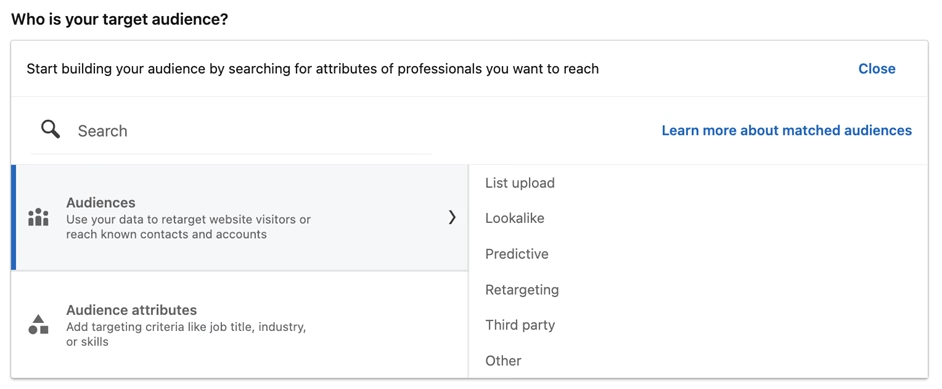
Audiences are lists of users you create or provide to LinkedIn, either from your website cookie retargeting, customer or company uploads, third-party integrations, etc. These are curated lists of users you get to use in your campaigns. You can also create predictive audiences based on these users, which is LinkedIn’s version of a lookalike audience from Facebook.
Some examples of an audience might be as follows:
- List of target customer accounts you want to influence
- Website visitors who didn’t complete your conversion action
- Users who engaged with your company page on LinkedIn
- Potential customers who filled out a lead generation form
All of these folks have taken some specific action, or you’ve researched them and added them to a list to target.
When you apply these audiences to a campaign, you simply check the box next to the audience name you want to use, and every user in that list is included.
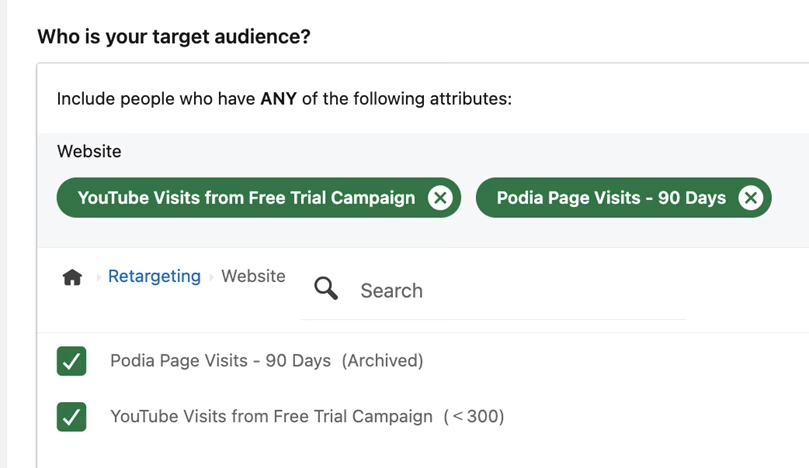
Audience attributes work in a different way. These are targeting criteria you add one at a time and build a target group of users based on the information LinkedIn knows about them. This information can be based on their profile or their behavior around the LinkedIn network.
From a high level, you can add targeting criteria based on the company a user works for, their demographic information, educational background, individual job experience, or their interests and traits.
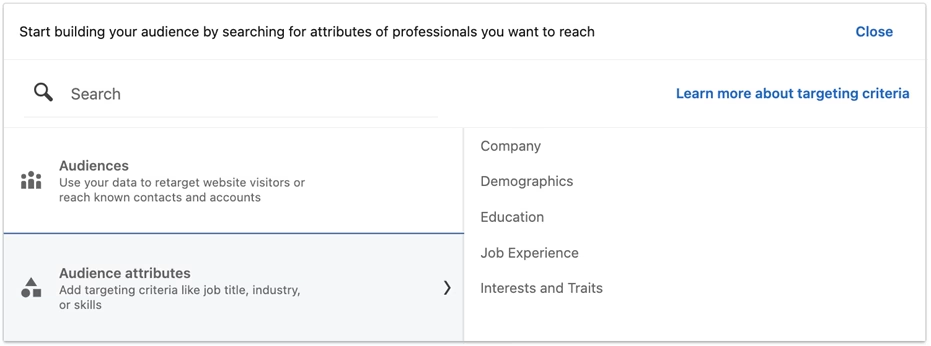
Here are some examples of targeting we like to use for audience attributes:
- Job titles that align with your target personas
- Member interests and groups that are relevant to your product or service
- Users who work at companies that your sales team would love to land
Both are highly valuable options that can be leveraged in lots of different ways depending on who your target persona is.
Ad formats
Another key difference between Google Ads vs. LinkedIn ads is the types of ads you can run.
Ad formats on Google
Depending on which types of targeting you opt into, there’s a wide range of ad formats you can use. In some instances, the ad formats you need to appear in each placement can help you determine what platforms to use in case you don’t have the resources to create those ads.
Search ads use Responsive Search Ads and are very attainable for just about every advertiser. They require only written text and a landing page. There are other bells and whistles you can use, but these are likely the most approachable.

For Display and Video campaigns, you’ll need to have a little more bandwidth and creativity. For these placements, you can use banner ads and videos to influence your audience as they move through the buyer’s journey.
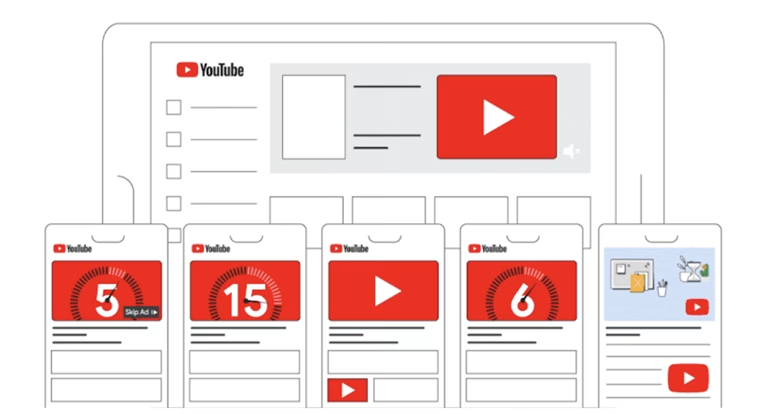
In many instances, the inability to create these assets helps decide for you if you can advertise on these placements.
If you are able to make these creatives, then the sky’s the limit! While all networks other than search lack much of the intent that comes with Search, there are still lots of different ways to make an impact on your audience. Likely, for these formats, you’re better off focusing on top to mid funnel calls to action rather than bottom of funnel like you can with search.
Ad formats in LinkedIn ads
While there is some variance in ad format depending on the campaign objective you use, there are quite a few different ad formats you can use on the LinkedIn platform to engage with your target audience.
This article would be far too long if we went into each format in-depth, but here’s a quick overview of the most common formats I use for lead generation campaigns:
- Single image ads are the most common and are likely the ones you’re most familiar with. They include a single creative that can have almost any combination of text, imagery, and graphics to promote your campaign call to action.
- Carousels and videos are very similar to single images in that you still get the surrounding supporting text. But rather than using a single image, you can leverage a series of images for carousels or a video for the video creative format.
- Document ads are one of the newer formats and let you upload a document (oftentimes a PDF or PowerPoint) with a few slides as a teaser and have the rest of the asset gated behind a lead gen form.
- Message ads operate almost like an email and can be found in the user’s LinkedIn inbox. Typically, these are reserved for highly-appealing calls to action (read: not your whitepaper that you use everywhere else) and are best used sparingly to make a big impact.
No matter what you’re promoting, there’s guaranteed to be an ad format that will work well for your purposes.
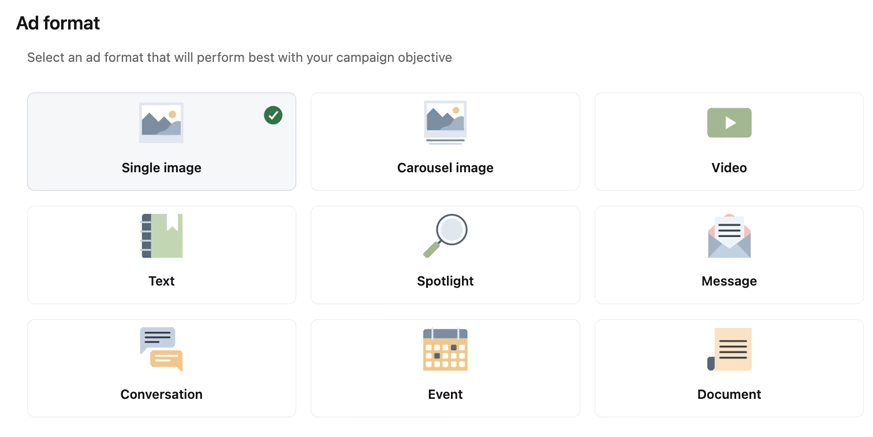
Google Ads vs. LinkedIn ads: Pros and cons
Need help deciding when to use each ad platform? Let’s dive into some pros and cons of Google Ads vs. LinkedIn ads.
Google Ads pros
Whether it’s bottom-of-funnel campaigns through search or top and mid-funnel with Google’s expanded networks, there’s something for almost everyone with this platform.
- Active searching: When using Search campaigns, you’re able to reach your target audience at the exact moment they’re researching the solution to a problem. If you can craft great ads and stand out from the competition, you can influence them at a pivotal moment in their buyer journey.
- Multi-channel coverage: Google isn’t just search. Within the same ad platform, you can leverage search, display, YouTube, and many other Google-owned placements for much broader coverage than just a single placement.
- Buyer influence: With those expanded networks, you can have a bigger influence on potential buyers by being present more often in their web browsing. You’re able to use these additional placements and impressions to further your potential customers’ knowledge and interest in your brand and offerings.
Google Ads cons
Here are some of the cons of Google Ads that you might alleviate with LinkedIn Ads.
- Lower control for personas: While search campaigns let you target users in their time of need, it’s a little harder to control who you generate leads from. Google’s targeting options just aren’t great for B2B options, so you may end up with more unqualified leads due to a lack of specificity with targeting.
- Low search volume for unknown brands/solutions: if you’re a new brand or your product is brand new, there might not be lots of people searching for you since they aren’t aware of you yet. Search can only answer demand, it doesn’t really create it. Without other top and mid-funnel strategies, search campaigns can be hard to get off the ground.
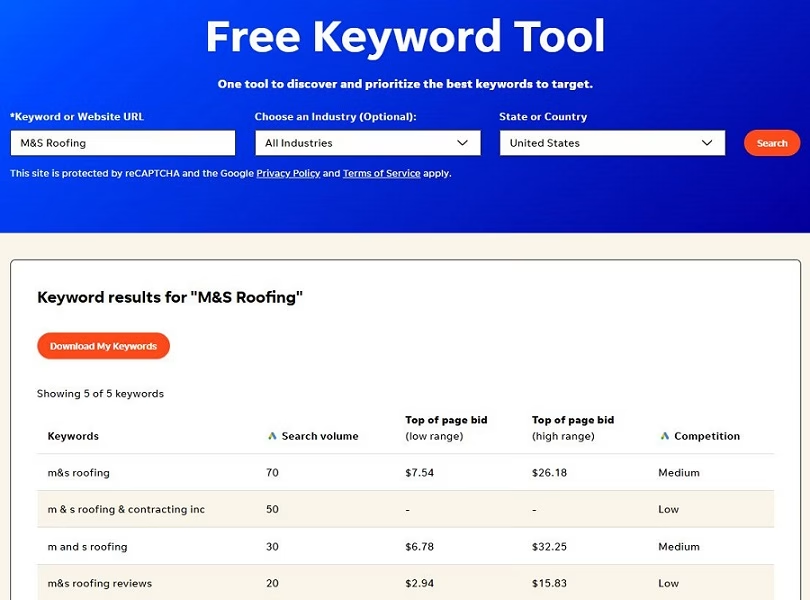
These branded Google Ads keyword examples have a monthly average search volume of 100 searches, according to our Free Keyword Tool.
LinkedIn ads pros
LinkedIn is the B2B advertising capital of the internet. No matter how you reach your audience or which format you use, your users are almost certainly on LinkedIn. As long as you’re on board with moving up the call-to-action funnel and focusing on top or mid-funnel calls to action, you’ll be in a good spot on LinkedIn.
- B2B advertising capabilities: If you’re trying to generate leads from other businesses rather than finding individual users, LinkedIn is a great option.
- Persona fit: If you articulate your target personas based on their job experience and the companies they’re associated with.
- Demand Generation: Unlike search, users on LinkedIn aren’t actively searching for solutions to their problems. But because of that, it means you can introduce your brand, company, and offerings to your target audience even before they may need you, helping to create demand and build out a longer pipeline.
- Unique Ad Formats: While all platforms have something akin to a single-image ad, LinkedIn’s special offers are the document and message ads. They let you interact with your target audience in different ways than other platforms and can help you stand out from the crowd.
LinkedIn ads cons
Here are some reasons why you might use Google Ads over LinkedIn Ads.
- Calls to action strategy: Although we all want bottom-of-funnel conversions, LinkedIn is not the best choice for those. There are some small exceptions, but you shouldn’t expect that you’ll be in that category. Typically, this channel does best with top and mid-funnel calls to action.
- Higher cost: With great targeting comes great cost. LinkedIn is one of the more expensive channels when it comes to CPCs and CPMs due to its industry-leading B2B targeting.
👀 See how the average Google Ads costs in your industry compare to your LinkedIn Ads costs with our latest Search Ad Benchmark Report!
Should you use both Google Ads and LinkedIn Ads?
So, which channel should you use to generate leads for your business? Google Ads or LinkedIn Ads? Why not both?
As we covered, each channel has its best use cases and drawbacks, but in my experience, they work really well together to create much more coverage across all stages of the buyer funnel.
LinkedIn is great for creating awareness and influencing the exact target audience you need. Google is great at answering a user’s queries and getting them to take the final conversion action through automated bidding strategies.
Let’s stop pitting platforms against one another. If I had my way, there wouldn’t be a choice of which one to use. It would be a discussion around how to most effectively use both to create a strong lead funnel for your company to capitalize on now and in the future.
Why both Google Ads and LinkedIn Ads work well together
Both LinkedIn and Google Ads can be great platforms to generate leads for your business. While some businesses might find one channel more impactful than another, they typically work well together to create a comprehensive buyer funnel to make sure you’re generating top-of-funnel interest, nurturing users to create demand, and then capturing that demand with bottom-of-funnel tactics.
For more help balancing these two platforms, see how our solutions can seamlessly support your campaigns on both LinkedIn Ads and Google Ads for maximized success.


